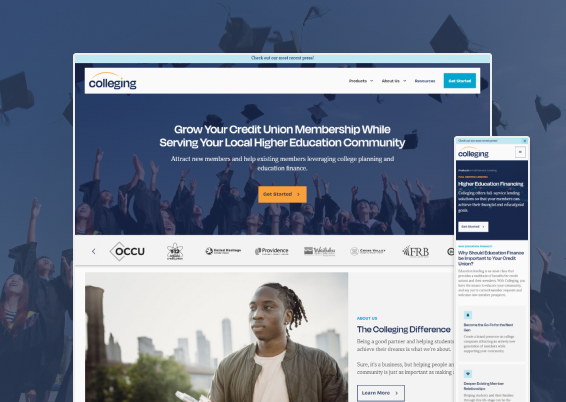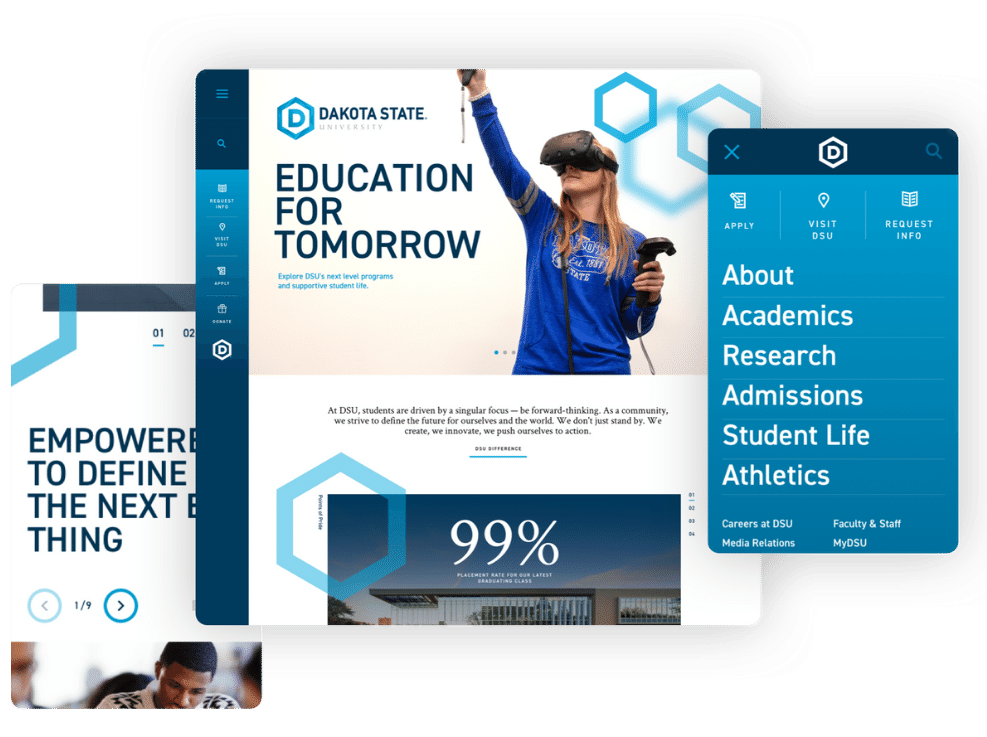The Power of User-Centered Website Design in Growing Your Online Target Market
Effective design principles-- such as user-friendly navigating and access-- are necessary in promoting user contentment and loyalty. What strategies can organizations embrace to guarantee their designs reverberate with customers and inevitably drive growth?

Comprehending User-Centered Style
User-Centered Design (UCD) is a fundamental strategy to internet site development that focuses on the needs, preferences, and habits of end individuals throughout the layout process. This method emphasizes recognizing customers deeply-- with research study approaches such as meetings, studies, and use testing-- to produce a web site that reverberates with them. By including customer responses at every phase, designers can make sure that the end product straightens closely with customer assumptions.
UCD advertises repetitive style, where models are examined and refined based on individual interactions and experiences. This cycle not only boosts use however also promotes a feeling of possession amongst individuals, as they feel their input is valued and impactful. Additionally, UCD assists determine prospective obstacles and pain factors in the user journey, enabling designers to resolve these challenges proactively.
Inevitably, accepting UCD leads to sites that are much more instinctive, appealing, and effective. By putting customers at the center of the design procedure, companies can produce electronic experiences that not only draw in but likewise keep their target market, driving greater satisfaction and loyalty. In a competitive on-line landscape, this strategy is necessary for accomplishing continual success.
Key Concepts of Individual Experience
An effective customer experience (UX) depends upon a number of vital principles that guide the design process and enhance interaction between users and the site. Functionality is extremely important; the web site has to be instinctive, enabling individuals to navigate quickly and find information promptly. This consists of clear labeling and a rational structure that lessens cognitive load.
Secondly, access plays a vital duty in guaranteeing that all individuals, no matter of their handicaps or abilities, can successfully engage with the web site. Integrating alt text for images, key-board navigating, and display reader compatibility promotes inclusivity.
Uniformity is one more vital principle. A natural layout language, from color systems to typography, aids users build familiarity and count on with the site (Website Design). It also reinforces brand identity
Additionally, responses systems are vital. Users ought to get instant and clear responses to their activities, whether through aesthetic signs or confirmation messages, which enhances their confidence in browsing the website.
Finally, mobile responsiveness can not be forgotten. With a boosting variety of users accessing websites by means of mobile gadgets, a layout that adapts effortlessly to various display sizes is essential for preserving a favorable user experience.

Benefits for Online Engagement
Efficient online engagement offers various benefits that can dramatically improve an internet site's general performance - Website Design. By promoting meaningful interactions between users and the site, companies can grow a devoted target market that returns with consistency. Involved individuals are more probable to share web content, consequently boosting natural reach and bring in brand-new site visitors with word-of-mouth promo
Enhanced online engagement additionally leads to boosted individual fulfillment. When users find a web site that resonates with their requirements, they are more inclined to explore its offerings completely, which can cause higher conversion rates. Additionally, interesting web content encourages individuals to invest more time on the website, reducing bounce rates and favorably influencing internet search engine ranking formulas.
Additionally, efficient engagement supplies very useful insights right into customer choices and actions (Website Design). By analyzing customer communications, organizations can tailor their web content and style methods to satisfy the advancing expectations of their audience. This flexible technique not just improves interaction however additionally strengthens the brand name's track record as receptive and user-centric
Inevitably, focusing on on the internet involvement via user-centered style develops a flourishing community where both the organization and the audience advantage, resulting in sustained development and success in the digital landscape.

Techniques for Reliable Layout
To make best use of the advantages of online interaction, using certain strategies in internet site design is extremely important. User-friendly navigating is important; customers must conveniently discover info without confusion. A well-structured food selection, clear tags, and a More Info sensible power structure enhance the user experience and lower bounce rates.
Second, receptive style is important in today's multi-device atmosphere. Ensuring that a website adjusts effortlessly to different screen dimensions cultivates availability, thus accommodating a broader audience. This adaptability not only improves individual contentment yet also favorably impacts internet search engine positions.
Third, the usage of aesthetic pecking order overviews individuals' interest to important components, such as contact us to action (CTAs) Using contrasting colors, differing font dimensions, and calculated spacing can effectively direct customers towards desired activities, facilitating better interaction.
Furthermore, carrying out consistent branding throughout all pages constructs count on and recognition. A cohesive color plan, images, and typography enhance brand name identification and develop a specialist look.
Last but not least, optimizing loading rates is important. Individuals are much less likely to involve with a slow-loading website, making efficiency optimization a crucial element of efficient style. By integrating these strategies, website makers can enhance user experience and eventually grow their online target market.
Real-World Success Stories
Success stories in user-centered website design illustrate the concrete advantages of prioritizing user experience. One remarkable instance is the redesign of the website for the nonprofit organization, Charity: Water. By integrating user responses, the organization streamlined navigating and stressed storytelling via impactful visuals. As an outcome, they experienced a 250% boost in online donations, demonstrating just how an instinctive style can drive user interaction and support.
An additional compelling situation is that of Airbnb, which utilized user-centered design principles to enhance their reservation process. By simplifying the user trip and integrating tailored suggestions, they considerably decreased site desertion prices. This concentrate on user experience added to an earnings growth of over 70% in a single year, emphasizing the relationship in between well-designed interfaces and economic success.
Moreover, the e-commerce giant, ASOS, implemented individual screening to refine their mobile app. By attending to customer discomfort points, they accomplished an exceptional 30% rise in mobile sales. These examples highlight that buying user-centered design not only improves individual complete satisfaction yet likewise drives substantial business results, enhancing the critical duty of user experience in accomplishing online growth.
Final Thought
In conclusion, user-centered internet site check my reference design works as a vital approach click over here now for improving on-line audience interaction. By prioritizing individual needs and preferences, companies can create easily accessible and intuitive electronic experiences that cultivate loyalty and drive conversions. The assimilation of user feedback throughout the design procedure not just reduces bounce rates yet likewise urges exploration. Ultimately, embracing efficient user-centered style concepts can considerably add to an organization's success in a competitive digital landscape.
User-Centered Style (UCD) is an essential technique to web site development that prioritizes the requirements, choices, and actions of end customers throughout the layout process. By integrating user comments at every stage, designers can guarantee that the final product straightens closely with individual assumptions.
A successful customer experience (UX) pivots on numerous vital principles that assist the style procedure and enhance communication in between users and the website.Success tales in user-centered site design highlight the concrete advantages of focusing on customer experience. These examples highlight that spending in user-centered style not only improves user satisfaction but also drives substantial business outcomes, strengthening the crucial function of customer experience in attaining online growth.